|
My latest paper published in Paed Surg International.
I have proposed a new classification of Mega-rectum in ARM where I had observed 4 distinct sub-types over the last 25 years. Also discussed strategies for prevention- 'Our incidence of megarectum dropped from 26% before 2013, to 4% thereafter, in keeping with several changes introduced by the senior author (DM). Article DOI: https://doi.org/10.1007/s00383-020-04687-z
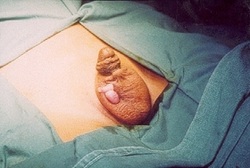 Undescended Testes Urology Surgery Undescended Testes Urology Surgery As this photograph shows, it is possible to mobilise some testes through the scrotum itself thus avoiding any scar on the abdomen. Not many surgeons, even now, are comfortable doing this surgery ‘entirely’ from the scrotum. See paper published by me on this subject - 'Management of the low undescended testes by scrotal fixation'. D.Misra, L.Kapila. Urol, 49:762-5, 1997. How common are they? About 4% of all boys are born with an undescended testes, however by the age of 1 year only 0.8% still have this problem. Complications Undescended testes do not form sperms well unless they are in the cold environs of the scrotum. There is also a 6-8 fold increase in development of malignancy later in life. Surgery The recommended age for surgery is 18 months, the surgery itself takes 30-45 mins and children are sent home the same day. What are retractile testes? A lot of young boys simply have a retractile testis, where the testis sometimes gets pulled up because of muscular contraction. It is vital not to label these as undescended testes and subject them to an unnecessary surgery. Upto 3% of boys and 1% of girls may get a Urinary tract infections (UTI) in childhood. After appropriate antibiotics, all children need to undergo an ultrasound of their urinary system.
The younger the child , the higher the chances that there will be an abnormality found, and therefore below the age of 1 year a DMSA scan and a cystogram are also needed. Sadly, UTIs are often missed in the first few years of life and some children are only picked up later with scarred kidneys. Conversely, if urine is improperly collected a false diagnosis of a UTI may be made and the child subjected to unnecessary investigations. Nocturnal enuresis or bedwetting is not uncommon, typically 8% of 8 year olds and 5% of 10 year olds still suffer from this problem. Various forms of management involve use of alarm systems, waking them up in the middle of the night, use of star charts, and in selected cases some medications may be tried.
The success rate is variable, this can be a difficult condition to treat and sometimes all one can do is wait for the children to outgrow this problem. Daytime urinary incontinence, on the other hand, is a different entity altogether. Children with this condition may simply have an immature bladder, but an early referral to a paediatric urologist is recommended for appropriate investigations. Consultant Paediatric Urologist Surgeon
How common is it?
Surprisingly, all boys are born with a tight foreskin, however the foreskin starts opening up with age. Complications Some boys with a tight foreskin may develop balanitis (infection) at a later age. Rarely this may result in scarring with resultant difficulty in passing urine. Non-operative treatment As long as the clinician can rule out BXO by clinical examination, it should be possible to treat some tight foreskins with steroid creams, the success rate is approximately 40-50%. Circumcision A circumcision surgery may be performed for religious or medical reasons. It may be done under local anesthesia, or under a light GA. Hypospadias Treatment In this condition, the patient passes urine from a hole which is situated further down the penile shaft, rather than on the tip of the penis. In the more severe cases, the penis may also be bent (chordee). Hypospadias surgery can be technically very exacting, and complication rates can be high particularly in those centers which do few operations a year. The surgery can be done in 1 or stages, anytime between the ages of 9 months to 2 years. If a child already has had 1 or more failed repairs before, then pre-operative treatment with testosterone may be beneficial. Warning: Graphic Surgery Content
Specialist Consultant Gastrointestinal Doctor
Constipation has almost reached epidemic proportions in the West, and the main reason appears to a deficient diet. Therefore the simplest measures involve increasing the intake of fresh fruits, salads and vegetables and ensuring an adequate fluid intake.
Pulses, lentils, rice, pasta, cereals like wheatabix and shredded wheat are all rich in fibre, Prune juice and bioyogurt are also helpful. Laxatives may be tried under medical supervision, more resistant cases may require enemas. If all else fails, an anal dilation under anaesthesia may work wonders. Rarely, the diagnosis of Hirschsprung's disease may be considered in cases of very severe constipation starting in the first few months of life. Here, the innervation of the rectum may be abnormal, treatment involves a major surgery. 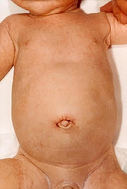 Paediatric Umbilical Hernia Surgery Paediatric Umbilical Hernia Surgery What is it? Some babies are born with a swelling in the belly button (umbilicus). This condition is more common in the afro-caribbean people and in the premature babies. Complications Surprisingly, rare. Most umbilical hernias get better in the first 18 months. Surgery may be considered in older children, partly the timing depends on the size of the defect. The commonest lump found in the neck is an enlarged lymph gland, which is surprisingly common in children between the ages of 3-10 years, particularly following an infection in the head and neck area. In most cases, the gland measures < 1cm and is soft. Larger glands, especially those that feel quite firm, may be indicative of a more sinister pathology like tuberculosis or malignancy.
Other lumps in the neck include branchial cysts or lymphangioma, which are typically found on one side of the neck. Midline neck lumps could represent dermoid cysts or thyroglossal cysts. All the lumps mentioned in this paragraph need surgery, except lymphangiomas which may respond to injection of sclerosants. Inguinal hernia and hydrocele both present with a swelling in the groin, often extending down into the scrotum. A hernia has loops of bowel which descend into the scrotum, while a hydrocoele consists of fluid around a testis.
Complications A hydrocoele is usually innocuous, while a hernia may obstruct and result in a very sick child with severe tummy pain and vomiting. Is treatment required? If a hydrocoele is persistent, then it may need surgery any time after 18 months of age, depending on the size. I strongly recommend that a hernia is fixed within 2-3 weeks of diagnosis, to prevent it from obstructing in the future with grave consequences. (Inguinal herniotomy in young infants with particular emphasis on premature neonates. D.Misra, V.Boston. J. Paed. Surg 1994, 29:1496-8) Dr Devesh Misra Consultant Paediatric Surgeon and Paediatric Urologist Gastro- oesophageal reflux – GOR- is very common in infancy, and most can be successfully managed conservatively. I very rarely operate in this setting.
Some do need medications and recent research has implicated some of these drugs with cardiac side effects- so one has to choose the therapeutic regime with care. In some, however GOR may affect weight gain and lead to failure to thrive. Following the child’s centile curves in the ‘red book’ then becomes vital. Inadequate nutrition in the first year of life has been linked to poor brain growth with implications regarding developmental milestones in the future. In other patients, there may be a tricky association with chest problems that needs to be carefully dissected out. These children may actually have presented to a chest clinic with chest infections or asthma. Dr Devesh Misra Consultant Paediatric Surgeon and Paediatric Urologist There are too many causes and include:
Bile vomiting, however, indicates a surgical cause - an intestinal obstruction. The most important of these is malrotation in which patients may get loss of bowel because of a twist called volvulus. Green or yellow vomiting, therefore, must never be ignored. (Pressure of early diagnosis in pyloric stenosis - is overreliance on ultrasound scans leading to negative explorations. D.Misra, V.E.Boston. Eur J Ped Surg. 7: 328-30, 1997) Dr Devesh Misra Consultant Paediatric Surgeon and Paediatric Urologist GP Referrals Consultations by Specialist Children Consultant Surgeon
This is the commonest referral in my practice. The possible causes are many but I have summarised the most important ones here:
But by far the biggest category is NSAP- non specific abdominal pain. I see perhaps 200 children every year with this problem where children get repeated attacks of severe abdominal pain or colics, which can sometimes result in weeks or even months off school. A careful evaluation is a must to pick up those that need surgery, thankfully a minority. Some do have a psychosomatic component and I do not hesitate to mention this openly and honestly to the parents. (Meckel's Scan in Children: A review of 183 cases referred to two Paediatric surgery specialist centres over 18 years. Pediatr Surg Int. 2013 May;29(5):511-7. doi: 10.1007/s00383-013-3270-3. C Sinha, D Misra) Dr Devesh Misra Consultant Paediatric Surgeon and Paediatric Urologist Every parent’s nightmare!
Presentation An acute onset of pain in the right side of the abdomen. Assoc fever and vomiting. Investigations Unlike the American surgeons, I do not believe in CT scans for diagnosing this condition- too much radiation with implications for malignancy in the future! I may get just simple bloods, urine test and maybe an ultrasound scan. Treatment Early surgery is desirable to prevent the appendix from bursting. When that happens, then pus may develop and spread to the whole abdomen. I prefer keyhole surgery for this condition and have spent the last 10 years honing my technique to get operative time down. It is wonderful to have minimal scars. (Chapter- UTI in children, D Misra, C Sinha. Handbook of Paediatric Surgery, publishers- Verlag Inc, 2010, pages 271-287) Dr Devesh Misra Consultant Paediatric Surgeon and Paediatric Urologist Presentation
Both conditions present with a swelling in the groin, often extending down into the scrotum. A hernia usually has loops of bowel which descend into the scrotum, while a hydrocoele consists simply of fluid around a testis. Complications A hydrocoele is usually innocuous, while a hernia may obstruct and result in a very sick child with severe tummy pain and vomiting. Is treatment required? If a hydrocoele is persistent, then it may need surgery anytime between 3-5 years of age , depending on the size. We strongly recommend that a hernia is fixed within 2-3 weeks of diagnosis, to prevent it from obstructing in the future with grave consequences. Inguinal herniotomy in young infants with particular emphasis on premature neonates. D.Misra, V.Boston. J. Paed. Surg 1994, 29:1496-8. Dr Devesh Misra Consultant Paediatric Surgeon and Paediatric Urologist |
Mr Devesh MisraAn experienced, expert paediatric surgeon in London, UK. He has special interest in Newborn Babies (neonatal) & Children Surgery, GI surgery & Paediatric Urology. An experienced pediatric surgeon LondonTreatments for urology conditions, circumcision, tight foreskin, balanitis, undescended testes, hypospadia, constipation etc.
Categories
All
|
experienced & well-trained private paediatric urologist consultant surgeon in London UK
|
TREATMENTS
|
CLINICS
|
|

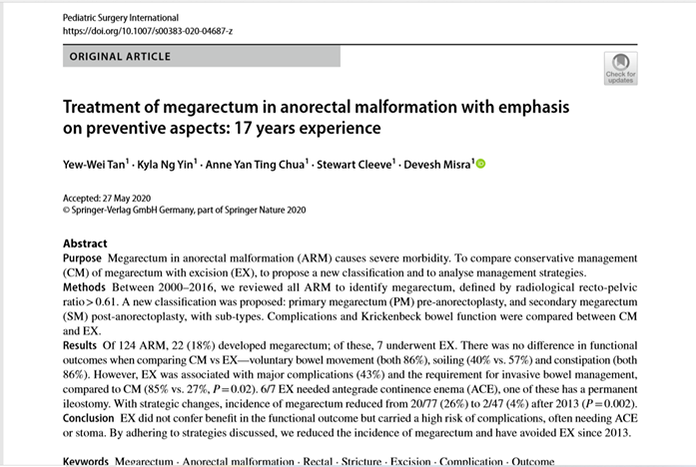
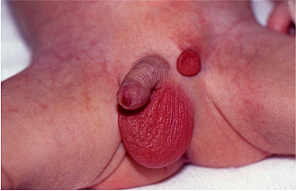


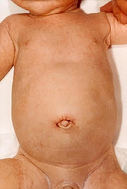
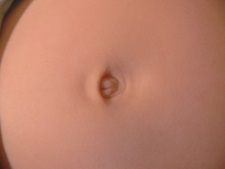
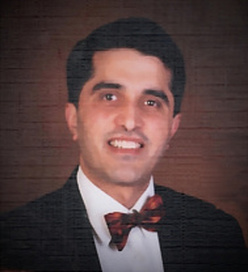

 RSS Feed
RSS Feed
